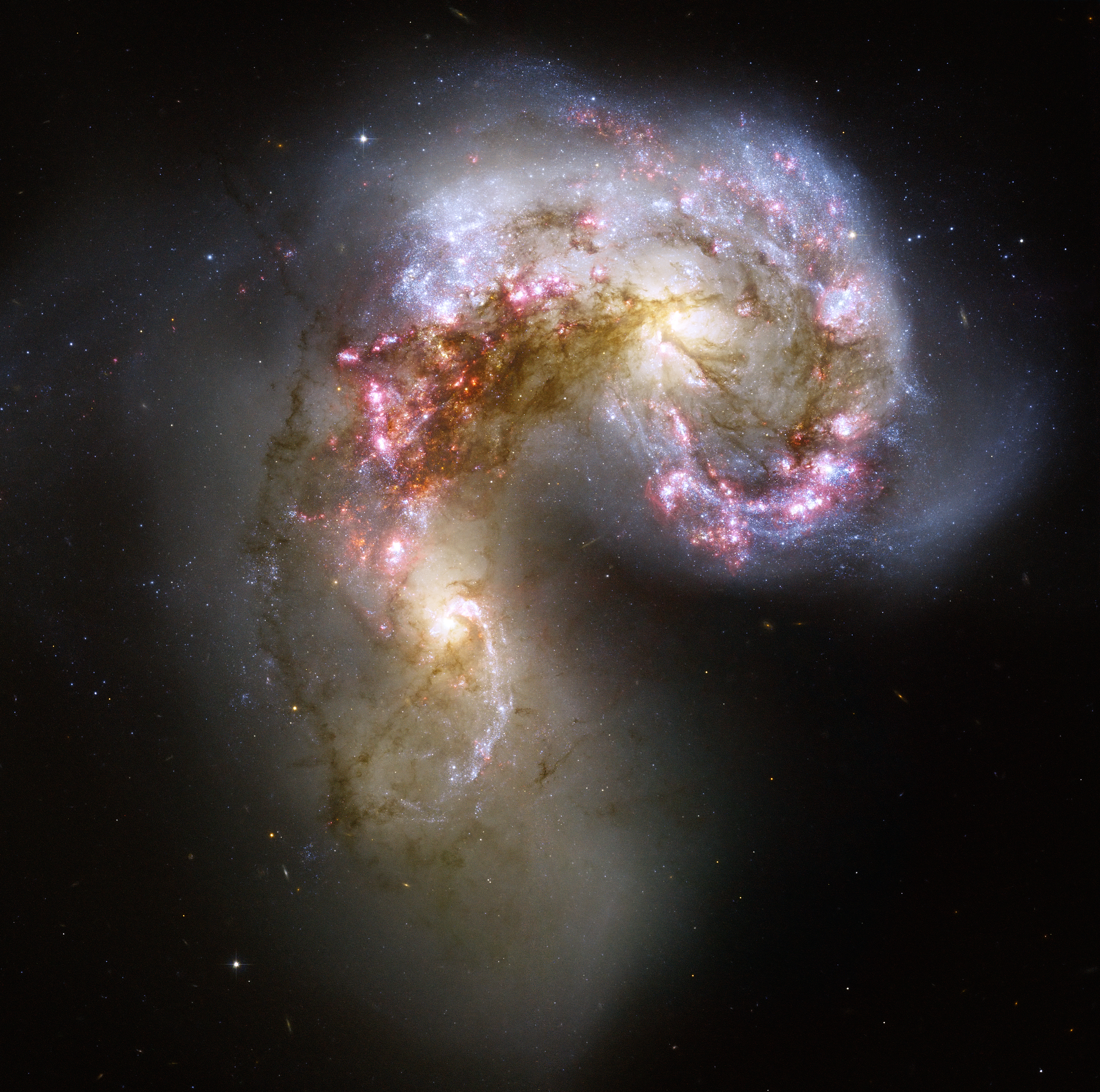
Antennae Galaxies
The Antennae galaxies, a merging pair of galaxies located about 62 million light-years from Earth, are shown in this image from the Hubble Space Telescope. The Antennae galaxies take their name from the long antenna-like "tails," seen in wide-angle views of the system. These features were produced by gravitational tidal forces generated in the collision of these immense celestial systems. The orange blobs to the lower left and upper right of image center are the two cores of the original galaxies and consist mainly of old stars criss-crossed by filaments of dust, which appears brown in the image. The two galaxies are dotted with brilliant blue star-forming regions surrounded by glowing hydrogen gas, appearing in the image in pink. Billions of stars will be formed during the course of this galactic collision, which began hundreds of millions of years ago and is still occurring. For more information, visit: hubblesite.org/news_release/news/2006-46 For a multiwavelength view of the Antennae galaxies, visit: hubblesite.org/news_release/news/2010-25
